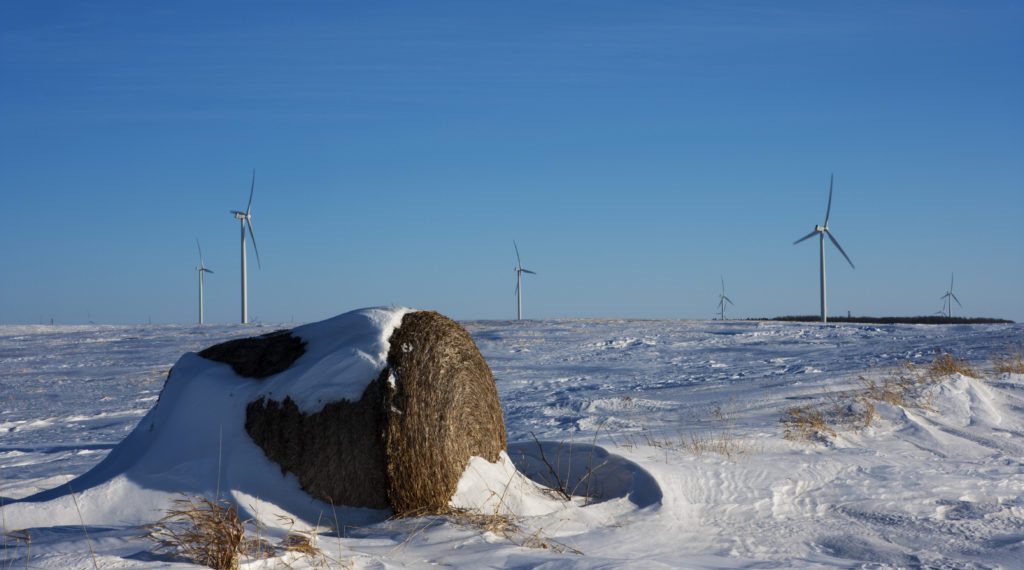
Guess what? America is on the road to a clean energy transformation. Our lives and our economy are becoming more electrified, and cleaner, as a result of the growth of renewable energy generation. In 2019, the U.S. Energy Information Administration reported 8.8 percent of utility-scale electricity was generated by wind and solar. With record capacity additions from wind and solar energy in 2020 announced recently by various outlets, that needle is moving up.
The Upper Midwest has some of the best wind energy resources in the country. Solar generation is growing as well, making it a significant contributor to the nation’s growing renewable energy capacity. The cost of renewable energy power plants is down 70 percent for wind and 90 percent for solar over the last decade. As a result, many utilities are taking advantage of the dramatic cost savings. They are increasing their use of renewables and announcing significant carbon reduction goals to save their consumers money and help clean up the environment.
In fact, Xcel Energy is one of the first utilities in the country to reach 10,000 megawatts of wind energy capacity. It has set goals of 80 percent carbon reduction goal by 2030, and 100 percent carbon free electricity by 2050. Ameren expects to have net-zero carbon emissions by 2050. DTE is planning an 80 percent carbon reduction by 2040. Great River Energy plans to have 40 percent renewable energy on its system by 2025, and 50 percent by 2030. North Dakota’s Basin Electric plans to have nearly 2,000 megawatts of wind and 275 megawatts of solar capability by 2023. All this means a greater demand for renewable energy in the near future.

Now, considering that we have emerged from the traditional Midwestern winter with long stretches of sub-zero temperatures, and Texas endured an historic energy crisis in February, it’s not surprising that some level of concern about maintaining our energy security is rising to the forefront. Especially since there is a growing amount of energy generation coming from renewable (and variable) sources. Still, skeptics need not be afraid.
Reliability is Job #1

For decades, utilities, public utilities commissions, the regional electric grid operator Midcontinent Independent System Operator (MISO), and other regulatory bodies have worked to ensure our electric system can deliver electricity to consumers and businesses every minute of every day. Nothing has changed. Each entity evaluates what it needs to maintain reliability every step of the way. Despite the growth of renewable energy on the electric system, there are no gaps in this oversight of reliability on the system. Also, there is no “magic number” or known limit to the renewables that can be added to the system that will cause it to “break.”
In fact, MISO’s recently released Renewable Impact Integration Assessment (RIIA) report shows that we can reach higher levels of renewables without “breaking” the system; and 30 percent renewables is NOT the limit. The RIIA analysis suggests that operating the grid beyond 30 percent renewables will add complexity, but MISO and its member utilities are already working on solutions. The report further states that achieving 50 percent renewable energy penetration on its system is possible with coordinated action between the utilities, MISO, and regulators.
Currently, renewables represent 13 percent of MISO’s entire portfolio. This means there is time to develop new market products and build additional transmission capacity to help facilitate the transition to an even cleaner energy grid. And, more learning will occur as we move closer to 30 percent renewables and beyond. The RIIA report indicates that MISO and its member utilities could reach the 30% renewables threshold as early as 2026.
Demand for renewables is growing
The dramatic cost reduction in renewable energy and growing demand from corporate and industrial consumers as well as utilities is driving the increase in the amount of renewables available on the electric grid. MISO has adapted. New products and services have been, and will continue to be, developed to effectively and efficiently manage variable resources. These products and services will help create an energy market that delivers the lowest-cost energy resources first. This helps keep the overall cost of energy low because renewable energy, which does not have a fuel cost, is most often the lowest-cost resource on the grid.
The bottom line is that we can manage more renewable energy on our electric grid. The integrated nature of our transmission system and the diverse generation resources across the regional footprint help ensure that electricity can be delivered to homes and businesses reliably and at a low cost. Even during the coldest months of the year.





